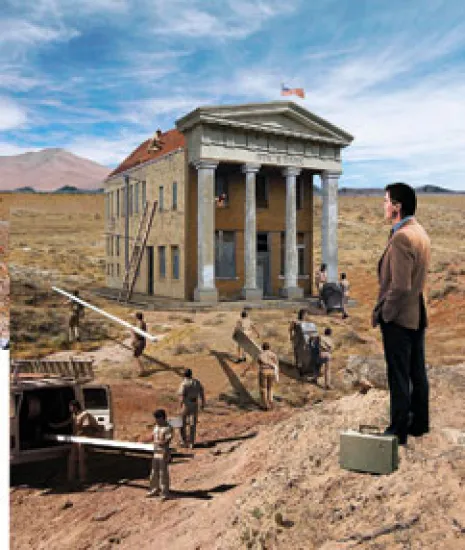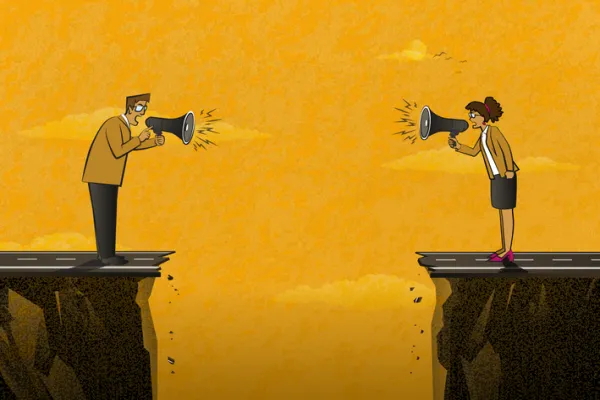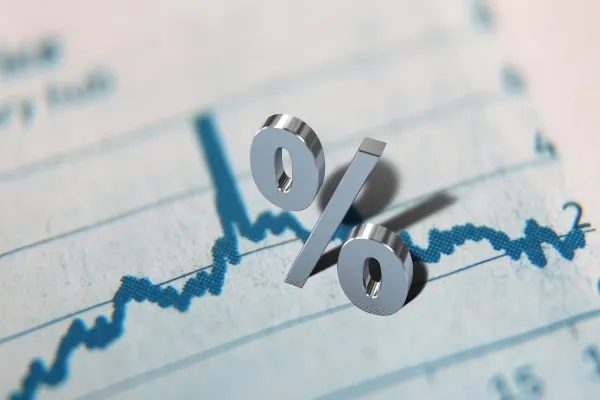The economy has reached the end of an era — not just the end of a business cycle — and it faces challenges even more profound than a recession and financial crisis.
During the past quarter century, bloated private sector balance sheets have become ever larger relative to incomes, but the era of the big-balance-sheet economy is now over. A transitional period of debt reduction and asset deflation has begun — a period that will last at least several years and perhaps a decade. It will bring financially severe recessions, spotty recoveries, poor profits and chronically high unemployment as the economy undergoes a painful healing process. Massive government intervention in the financial markets will prevent a crippling breakdown of the financial system, but it will not prevent enduring economic difficulties. This new period is a depression, but fortunately, it will be a contained depression.
A depression can be defined as an extended period — five years, ten years or longer — of chronically weak economic performance and financial instability caused by such long-term imbalances as chronic overcapacity, severely overpriced assets and grossly excessive debt levels. By contrast, a recession is a shorter period, usually a year or so, of contracting economic activity typically caused by short-term imbalances reflecting overproduction or temporary demand disruptions. The imbalances that cause a depression result from many years of overinvestment and unsound behavior, and it takes years to resolve them. The economy must reduce debt-to-income ratios, eliminate excess capacity and bring the prices of assets back into line with their earning power — tasks made more difficult by paltry income growth, stagnant production and depressed earnings. A depression is not a continuous recession, and it may span multiple business cycles (the Great Depression had two).
I coined the term “contained depression” in July 1990 to describe our economic outlook for the coming years. The 1990–1991 recession and subsequent 30-month malaise were caused not by rising interest rates or an inventory buildup, but by enduring balance-sheet problems, which included widespread industrial overcapacity, deflating bubbles in residential and commercial real estate and related crises in the financial sector.
However, unlike in 1929, the economy had two critical containment mechanisms: (1) an effective lender of last resort, embodied in the Federal Reserve Board, the Federal Deposit Insurance Corp., the Treasury and other government agencies, which prevented massive 1930s-style bank failures, and (2) a larger federal government budget relative to the size of the economy (roughly 20 percent of GDP, compared with 3 percent of GDP in 1929), making the government a much larger automatic fiscal stabilizer.
The economy did indeed enter into a comparatively mild contained depression from 1990 to 1993, and again from 2000 to 2003. However, both of these episodes were cut short by new bubble expansions, which interrupted the cleaning up of long-term balance-sheet excesses and ultimately exacerbated them. In both cases, the only way the Federal Reserve could reignite the economy was by lowering interest rates substantially, to below where they had been in decades, thereby providing vast debt service relief, stabilizing credit markets, justifying higher asset valuations and stimulating new bubbles that powered the economy. Today, however, the Fed will not be able to lower rates far enough to provide sufficient refinancing opportunities, having held the federal funds rate at 1 percent just a few years ago. Thus the chances of once again escaping a much longer correction period are small this time around.
Balance sheets have been getting bigger relative to incomes over the course of the post–World War II period, with the process accelerating dramatically from 1980 on. This has been true for the household, nonfinancial corporate and financial sectors alike. However, these trends cannot persist indefinitely. Debt cannot grow faster than incomes forever because it must be serviced out of incomes, and assets must ultimately be justified by the incomes they generate. Thus there is a limit to how large balance sheets can become relative to incomes.
Reaching that limit creates an enormous problem for the economy: Balance-sheet expansion is directly tied to the processes through which a private economy generates profits. As balance-sheet expansion shifts from rapid to sluggish, profits weaken dramatically, debt performance worsens, asset prices are undermined by poor returns and investment falls faster. In other words, the economy’s bloated balance sheets cannot simply remain bloated; either they must continue to expand rapidly or else profits will fall and trigger a vicious cycle that causes balance sheets to contract.
Our economy appears to have reached the point where balance sheets cannot continue to expand and are beginning to contract. Household debt growth virtually halted in the second quarter and may be negative for the first time in the postwar era in the third quarter. The value of household holdings of real estate and corporate equities is deflating. Prices of some corporate assets are beginning to decline, including some commercial real estate, and business equipment investment is falling.
What makes these trends so serious is their interaction with crumbling debt performance in a vicious cycle of financial breakdowns and economic decline. Like the period we are entering, the early 1990s and the early 2000s were characterized by vicious cycles of asset deflation, credit crises and plunging investment in various parts of the economy. This time, however, the severity of the balance-sheet contraction will be greater, with dramatic contraction in household balance sheets and what may well be the mother of all postwar consumer retrenchments. Moreover, the financial sector, which was largely unscathed during the corporate credit problems of 2001–2003, will continue to undergo profound balance-sheet contraction.
Without the government’s containment the economy would indeed face another Great Depression, but fortunately, nothing so dire will occur. The government will prevent a collapse of the financial system and partially buffer the damage to the economy, containing the depression. The government will succeed not because it is wise about economic affairs or because it won’t make mistakes. Rather, it will have no choice but to keep patching holes in the financial sector, and its sheer size and presence guarantee a sizable fiscal stabilization. The government has virtually unlimited power to intervene to protect the basic functioning of the financial system, and in an emergency can spend whatever is necessary. Although government solutions will not fix the fundamental problems that will cause the depression, they will limit the financial fallout. By the end of the contained depression, the government will likely have committed trillions between rescue operations and running huge deficits. And although some may complain about the price tag, it will be a bargain for enabling us to avoid another Great Depression.
Although the economy’s exact path is uncertain, we expect the economic and financial decline to intensify in the final months of 2008 and in 2009. The present recession, which is only the beginning of the contained depression, is likely to continue until near, if not past, the end of 2009. Even when the housing market has bottomed out, the effect of home depreciation on consumer spending will keep worsening. We have advised our institutional clients that this is a time to put top priority on the protection of capital and to expect unusually severe, widespread asset price deflation and credit market tightness.
Nevertheless, the contained depression will bring opportunities long before it is over. One opportunity is to capitalize on falling interest rates. The Fed will soon resume reducing rates and will ultimately cut them to the floor in an effort to mitigate the economic and financial debacle as inflation rapidly diminishes and deflation threatens. As in the past two recessions, Treasury yields will fall to record lows, although spreads will remain wide.
A good defense for investors now will provide for a good offense later. The contained depression will create great long-term buying opportunities by reducing asset prices, depressing returns, making credit scarce and darkening investor expectations. Once the present recession hits bottom, when fear and financial chaos still cloud the markets, it will be time to start looking for long-run opportunities. (The best time to buy stocks during the 1930s was in 1932, long before the depression ended.) However, we have urged our clients to be patient, both by holding out for extreme “fire sale” bargains and by lowering their short- and medium-term expectations when they do consider buying because prices may remain depressed for several years.
The coming years will be difficult and frightening, but the world is not coming to an end. The contained depression will create lean balance sheets, pent-up investment demand and growing pressure to employ rapidly changing technology and to address society’s changing needs. For now, however, do not underestimate the financial storm, and be glad that the government, no matter what mistakes it may make, will ultimately succeed in preventing the breakdown of the U.S. financial system.
David A. Levy is chairman of the Jerome Levy Forecasting Center in Mount Kisco, New York.






